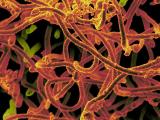Nov 2, 2012
Flu transmission stays low in US, Europe
Flu activity in the United States last week showed little sign of increasing, with most indicators below their baselines, the Centers for Disease Control and Prevention (CDC) said today. But the CDC cautioned that data from eastern regions are not complete because of Hurricane Sandy earlier this week and that flu numbers from the past week could change as more information becomes available. Nationally, the proportion of respiratory specimens that tested positive for flu was 6.2%, the same as the previous week. All 10 regions were below their baselines for percentage of doctor's visits for flulike illness. The percentage of deaths attributed to flu and pneumonia climbed above the epidemic threshold to 6.5%, and the number of states reporting local geographic spread increased from three last week to five: Alaska, Iowa, New York, North Dakota, and Wyoming. No pediatric deaths or novel flu virus infections were reported.
Nov 2 CDC influenza update
Elsewhere, markers of flu activity in Europe last week showed no signs of sustained transmission, with 18 countries reporting sporadic or low flu spread, the European Centre for Disease Prevention and Control (ECDC) said yesterday.
Nov 1 ECDC influenza update
Mauritania reports Rift Valley fever outbreak
Mauritania's health ministry has reported a Rift Valley fever outbreak involving 34 cases and 17 deaths, the World Health Organization (WHO) said yesterday. The outbreak began in the middle of September and has affected six regions. All of the patients had contact with animals, the WHO said. Rift Valley fever is transmitted among animals by mosquitoes, and humans can contract the disease through contact with blood or organs of slaughtered animals that are sick or through the bite of an infected mosquito. In humans the disease is mild, but a severe form of the disease can occur in about 1% of cases. Mauritania's last Rift Valley fever outbreak occurred in 2010, according to the WHO. So far lab tests have confirmed 25 cases, and testing of animal samples suggests the virus is circulating in several regions of the country. The WHO said it and other global health partners are working with a Mauritanian government task force to strengthen surveillance, response, and disease-prevention efforts.
Nov 1 WHO statement
Report: Asia-Pacific region has 30 million malaria cases yearly
Countries in the Asia-Pacific region carry the biggest malaria burden outside of Africa, reporting about 30 million malaria cases each year, along with 42,000 deaths from the disease, according to a report unveiled today by the Roll Back Malaria (RBM) Partnership. The findings, part of a broader analysis of the impact of malaria on Asia, the Pacific, the Americas, the Middle East and Europe, were released on the final day of a malaria meeting hosted by Australia's government, according to a press release from RBM. The group said the new report is the first to explore the impact of the disease outside of Africa, which bears the biggest malaria burden. Twenty countries in the Asia-Pacific region are malaria-endemic. Robert Newman, MD, MPH, who directs the World Health Organization (WHO) Global Malaria Program, said in the statement that one of the area's greatest challenges for controlling malaria is antimalarial drug resistance. Sen. Bob Carr, Australia's minister for foreign affairs, said the government's goal is to cut malaria illnesses and deaths in the Asia-Pacific region by 75% by 2015. In another development at the meeting today, Australia's government pledged $100 million over the next 4 years to boost malaria control efforts, fight antimalarial drug resistance, and spur research, according to a separate statement from RBM, which commended Australia for its support.
Nov 2 RBM press release on RBM report
Nov 2 RBM press release on Australia's pledge
Nov 2 RBM report



















